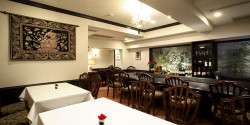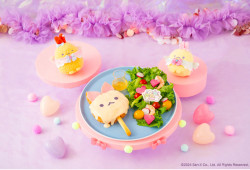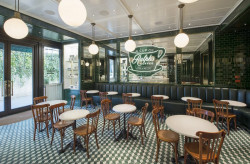
November 12, 2012
Cue Action
Japan’s world champ ladies’ billiards player shoots some stick
By Metropolis
Originally published on metropolis.co.jp on November 2012

In the United States and Japan, when people think of ball games played on a table with cues (or cue sticks), they are most likely to think of pool. In the United Kingdom, Commonwealth countries, Thailand and China, the big sport is snooker. But around the world there are a variety of similar sports. Twenty-five years ago, snooker was the biggest sport in Britain in terms of money, TV ratings and the number of participants. The overwhelming success of soccer’s Premier League now overshadows snooker, but the world champion still gets to take home a top prize of £250,000 (around ¥30 million).
It’s not quite the same in billiards—especially women’s billiards. Hida Orie is the three-time defending women’s world champion in the sport of three-cushion billiards. While snooker’s champions have country estates and Rolls Royces, Orie is a handbag saleslady at a Tokyo department store and practices in her spare time at her father’s gloomy three-table club on the outskirts of Tokyo.
The spotlight will be on Orie in November when the 4th World Championship Ladies’ 3-Cushion tournament takes place in Tokyo, featuring 16 of the world’s best competing in the biennial title fight. She will be hoping to retain the title she first won in 2004 in Spain. She defended her title in 2006 in the Netherlands and again in Turkey in 2008. As there was no tournament in 2010, she has now been reigning champion for eight years.
Orie has also won the All-Japan Championship 12 times, following in the footsteps of her mother, Kazumi, who was champion five times. Her father (with Orie, pictured right) won the All-Japan Senior Championship in October. Not surprisingly, playing billiards was a family pastime and Orie first picked up a cue at the age of three. She entered her first tournament at the age of eight; all the other players were adults. She took the All-Japan title for the first time at the age of 19. Billiards was her life.
“From the age of about 16, I would play for about six to eight hours every day,” she tells Metropolis. “I managed to carry on like that for about eight years. I worked in a billiards club, but still it was hard to find enough time to practice. Any free time I got, I practiced.”
She also tried her hand at nine-ball pool (runner-up in the All-Kanto Championship in 1993) and trick shots (third in the All-Japan Championship). But three-cushion billiards was her speciality. And it’s not easy.

Unlike snooker, pool and its variants that all require cue-ball control, placement and use of the cushions, three-cushion billiards has no pockets. The aim is for your ball to make contact with your opponent’s ball and a third ball while ricocheting off the three cushions. You have to work out the angles, the speed of the table, the response of the rubberized cushions and the spin on the ball. The first person to 25 points wins. And Orie is a winner. She even spent a year playing professionally in Holland.
“I really enjoyed that but it was a lonely life in Holland,” she recalls, adding that she was inspired by the popularity of the sport and the number of fans in other places. “There were many spectators in Turkey and Holland and also in Koreatown in New York.”
Japan is a different matter. There are clubs throughout Japan, but billiards doesn’t pull in the big sponsors or attract major TV channels.
“There are still around 6 million people playing the sport at 300 clubs,” says Gaku Nishio, executive director of the Nippon Billiard Association, which was founded in 1951, replacing the Billiards Association of Japan that was set up in 1926. Following the sport’s introduction by the Dutch in the Meiji era, “the popularity of the sport boomed quickly in the foreign settlement areas of Kobe and Yokohama,” says Nishio.
Nishio and Orie will be hoping for another boom inspired by the World Championship in Japan.







